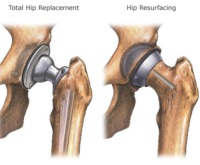
Check Out Our New Forum!
The Your Turn Forum provides a space where people can post questions about mesh and medical device related issues and get advice and support from the Mesh News Desk community.
Join the Discussion!
Earlier this year industry agreed to pay $595 million over 5 years to the FDA as part of its operating budget. In exchange, the FDA would reduce the average time it takes to bring a device onto the market under the 510(k) approval system from 150 days to 124 by the year 2017.
The agreement was reached under the Medical Device User Fee Amendments of 2012 (MDUFAIII).
The 510(k) approval process has been responsible for allowing most defective medical devices onto the market including metal-on-metal hips and vaginal mesh.
Safety and efficacy clinical trials are not required under 510(k). The device makers file paperwork notifying the FDA they plan to market the device and claim it is the "substantial equivalent" of a device already on the market known as the "predicate device."
Mass Device (here) reports that 90 percent of medical devices should be cleared for marketing within 90 days and 98 percent should be on the market within 150 days.
Preliminary acceptance review will be conducted within 15 calendar days of receiving the 510(k) application to market a device.
MDUFA authorizes the FDA to hire more personnel to better handle the extra load to meet these time frames.
Industry has long complained that it takes too long to bring a product to market, even though, under 510(k), industry gets a pass because it does not have to provide data on expensive, time-consuming clinical trials.
An Institute of Medicine report in 2011 (here) called the 510(k) approval process "fatally flawed."
Here is the FDA guidance for the years 2012 through 2017.
MDND reported (here) on MDUFA for Another Five Years last August.
User fees were established by Congress in 2002 and are set under the Food Drug & Cosmetic Act, depending on each different type of submission.
However consumer groups argue that MDUFA III gives medical device companies a fast track avenue to approvals for some products in exchange for the higher user fees.
Consumer Union’s Safe Patient Project argued that the politically powerful medical device industry successfully blocked much needed patient protections from the House and Senate versions of MDUFA. See background story here.
What did survive in MDUFA III was an ability by the FDA to reclassify problem devices once the agency realizes there is a problem with a defective device. That also means the future applications of a similar medical device will be more heavily scrutinized.
Also still alive is a requirement that the FDA issue regulations within six months to establish a Unique Device Identification (UDI) System for life sustaining implantable medical devices. The UDI system must be implemented within two years of finalizing the regulations.
It is not unlike a VIN number on your vehicle that allows a car manufacturer to alert you if there is a recall and to track the car to see if the necessary improvements have been made. #